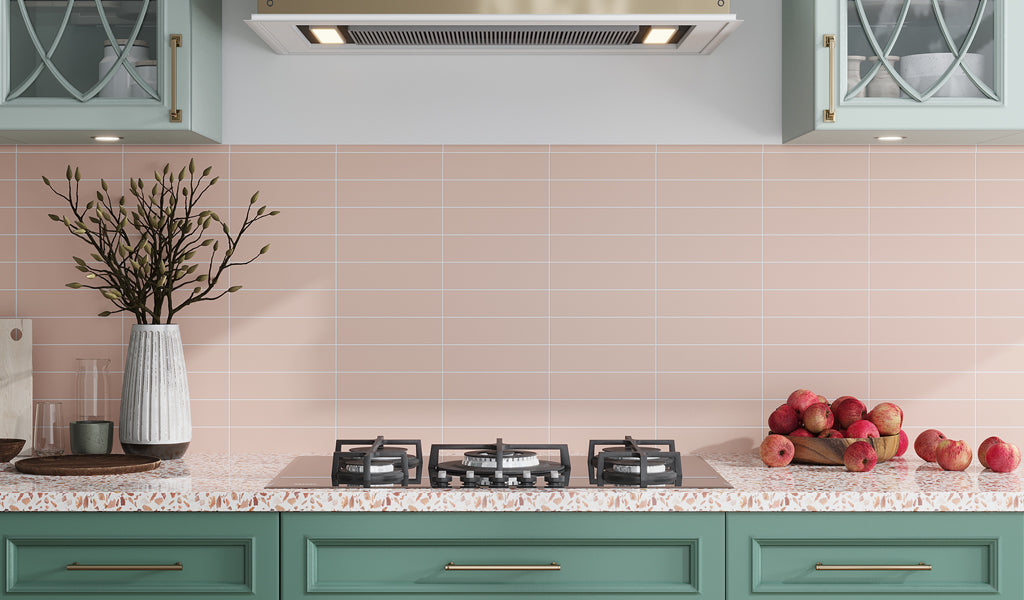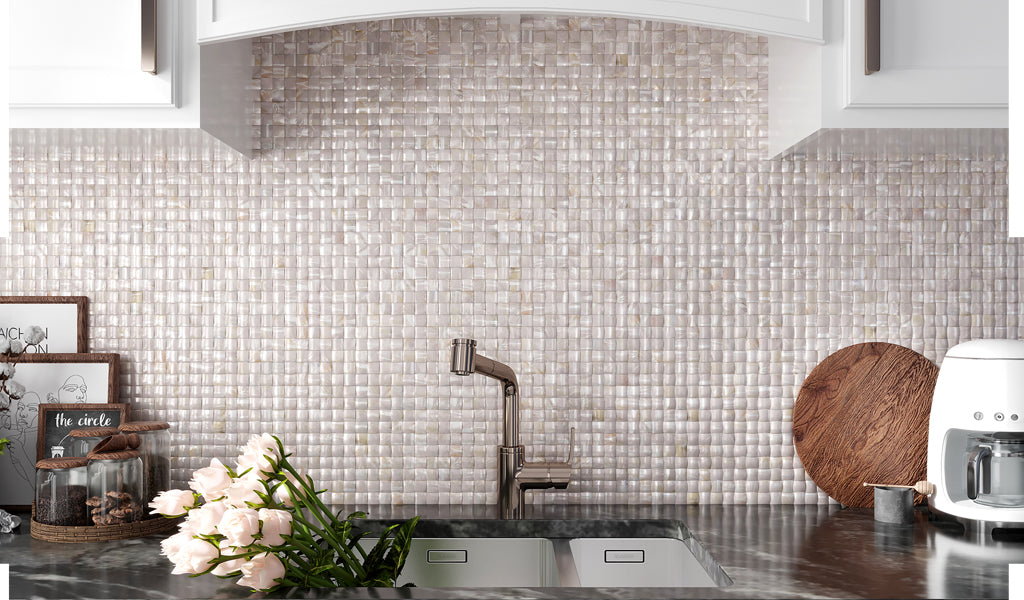An Ultimate Guide to Cutting Ceramic Tile with a Glass Cutter for Beginners
Oct 29, 2024
If you are planning to cut ceramic tiles, it’s quite easy to DIY with the right tools and techniques by saving time and money on contractor services. The tool you choose depends on the shape to be cut or the quantity of tiles to be cut. When you need to cut a few tiles with straight cuts, a glass cutter is the right option, whereas, for larger projects or intricate shapes, you need a wet saw.
Whether you're a DIY enthusiast or just getting started, this guide will walk you through essential tile-cutting methods, with step-by-step instructions on how to use a glass cutter for ceramic tiles. Go ahead to achieve professional-quality results in your own space using inexpensive methods like a glass cutter!
Step-by-Step Guide to Cutting Ceramic Tile with a Glass Cutter
We are happy to share with you this beginner-friendly guide that will walk you through the essentials of cutting ceramic tile using a glass cutter.
1. Mark the Cut Line:

Measure and mark the exact cut line with a fine-tip pencil and a square. A square is a ruler in a 90-degree or right-angle shape. You can place the horizontal edge of the square aligned with the tile bottom and then use the vertical edge to draw with your pencil.
** Note that this approach is suitable only when you need to do fewer cuts. It is not designed for handling corners or curves.
2. Score the Tile:

Hold the glass cutter at a 45-degree angle, pressing firmly as you drag it along the marked line. Avoid multiple cuts; a single, steady scoreline is sufficient.
** You can also use a carbide-tipped pencil if you can’t find a glass cutter.
3.Snap the Tile:
Place the scored tile over a solid edge with the score line centered over the edge. Apply gentle pressure to snap the tile along the line. If you scored the tile from left to right, apply firm pressure on the top and bottom edges to snap it cleanly, and vice versa. For cuts close to the edge, use tile nippers to carefully break off the narrower section.
4. Smooth the Edges:
If needed, smooth the edges by gently rubbing the cut side of the tile across a brick or concrete surface. You can also use a tile file or a sandpaper for smoothening the edges of the cut ceramic tiles.
This step-by-step approach gives you precision cuts without the dust or debris of heavy-duty tools, making it perfect for intricate designs or backsplash tiles.
Why Use a Glass Cutter for Ceramic Tile?
When there are different cutters like angle grinder or wet saw with a diamond blade, you can use a glass cutter for cutting ceramic tile for several reasons:
- Getting precise cuts for intricate shapes and straight lines
- Easy to handle for DIYers
- Cost-effective solution for small projects
- Versatile and suitable for multiple tiling applications like backsplashes, flooring, walls, and more.
- Minimal dust and debris, so it’s quite easy to clean.
- Small and lightweight so easy to transport and store
Tools and Materials You'll Need
To learn how to use a glass cutter efficiently to cut ceramic tiles, you will need the following tools:
- Glass cutter
- Ruler or a straight edge
- Fine tip pencil or chalk or a marker
- Clamps
- Tile nippers
- Sandpaper or tile file
- Safety glasses
- Rubber or cut-resistant gloves
- Dust mask

Other Methods for Cutting Ceramic Tile
There are four primary tools to cut ceramic tiles, each offering unique benefits depending on the job’s intensity:
Tile Nippers
Tile nippers are perfect for detail work, allowing you to "bite" off small, irregular sections of tile, making them ideal for custom shapes or rounded edges. While they don’t deliver a perfectly smooth finish, tile nippers excel in shaping areas that need subtle adjustments, like fitting tiles around pipes or curved fixtures.
Manual Tile Cutter
A reliable choice for clean, straight cuts on larger ceramic tiles, a manual tile cutter is designed for efficiency with minimal mess. By scoring and snapping tiles along a marked line, it handles standard cuts effectively and is especially suited for straightforward tile projects where precision and speed are essential.
Angle Grinder
For more complex cuts—especially curved or custom shapes—an angle grinder is your go-to. Equipped with a diamond blade, an angle grinder can handle thicker tiles and create intricate patterns with control, making it ideal for artistic or architectural tile layouts.
Wet Saw
The ultimate tool for heavy-duty cuts, the wet saw is indispensable for projects involving dense or high-gloss ceramic tiles. The water-cooled diamond blade cuts smoothly, minimizing heat and reducing chipping, which ensures a clean, polished edge. Perfect for larger projects, the wet saw is your tool of choice for clean cuts on hard ceramic tiles.
Using the right tool for each type of cut will save time and improve your finish, so keep these options in mind when planning your next tile project.
Safety Tips and Best Practices for Cutting Ceramic Tiles
These simple tips and tricks will make your tile cutting process easier.
- Create a stable workbench setup to work.
- Score the tile only once with a solid, steady line. Don’t go over it multiple times.
- Dip the cutting wheel in water or oil for smoother cuts and reduced breakage
- Ensure to apply a firm and even pressure to cut the tile.
- Wear proper safety glasses, gloves, and a dust mask.
- Start by practicing on scrap tiles if you're not sure about how to cut ceramic tile.
- If tile doesn’t snap off, rather than forcing on it, re-score the line and cut again.
- Mistakes are a part of the learning curve, so even pros keep a few extra tiles on hand. Ensure you have them too
Common Mistakes to Avoid When Cutting Ceramic Tile
Not everyone are experts, so it is better to be aware of the common mistakes to avoid
- A frequent mistake is not scoring the tile deep enough and it becomes difficult to snap it neatly.
- Beginners may overlook the necessity to work on a stable and sturdy surface.
- Don’t apply too much force when attempting to snap the tile.
- Steel or carbide tipped blade does not help, so use diamond tipped blade.
- Don’t attempt to cut very thick ceramic tiles with a glass cutter.
When to Use a Glass Cutter vs. Other Tile Cutting Tools
Glass cutters are ideal for cutting glass tile, mosaic, and thin ceramics, allowing for precise, clean cuts without chipping. If you’re working with thicker ceramic tiles or stone materials, a ceramic tile cutter like a wet saw with a diamond blade can be beneficial, offering more versatility in cutting. Ultimately, the choice depends on the tile material, thickness, and the complexity of the cuts you need to make.
Take the time to research how to use a tile cutter correctly, as mastering the basics will help you avoid pitfalls and achieve better results. It’s quite usual for beginners to have doubts when learning how to cut ceramic tile but with practice and patience, professional finish is guaranteed.
Frequently Asked Questions:
1. Can you cut ceramic tiles with a glass cutter?
Yes, it is quite easy to cut ceramic tiles with a glass cutter by marking the cut with a pencil, scoring, and snaping them.
2. What’s the best type of glass cutter on ceramic tiles?
We recommend using a diamond-tipped glass cutter for a clean finish from start to end, whereas when using carbide or steel-tipped cutters, the finish starts to deteriorate from the very first cut onwards.
3. Do you need a special blade to cut ceramic tiles?
A diamond blade is sufficient to cut ceramic tiles. There is no need for any other special blades.
4. How do I use a glass cutter to score ceramic tiles?
Ensure the tile surface is clean and dry, mark the line with a pencil, place the tile on a stable surface, hold the glass cutter firmly, apply steady pressure, and drag it in a continuous motion to score ceramic tiles. Do it at once rather than going over again.
5. Do you cut ceramic tile face up and down?
When cutting ceramic tile, ensure it faces up and you score on the glazed surface. This avoids visible chipping on the exposed side.
6. Is it better to cut ceramic tile wet or dry?
When cutting small tiles, you can go in for dry cutting methods which works better for simple, straight cuts. Whereas when cutting larger tiles, use a wet saw for thicker tiles and intricate cuts as it minimizes dust and gives better precision.
7. Can I cut thick ceramic tiles with a glass cutter?
It isn’t advisable because glass cutters are designed to score thin ceramic tiles. Rather, using a wet saw with a diamond blade is recommended to handle the density of thicker ceramic tiles and ensure a precise and clean cut.
8. How can I prevent my tiles from breaking during cutting?
- Use a quality diamond-tipped glass cutter.
- Score only once
- Place the tile on a stable flat surface
- Use firm pressure while scoring and don’t press too hard
- Use tile nippers or pliers to trim off rough edges
- Use sandpaper or a rubbing stone to smooth out finally
9. How can I achieve a smooth edge on my cut tiles?
You can achieve a smooth edge on cut tiles by first snapping off the rough edges using a plier or tile nipper and then rubbing it with sandpaper or a rubbing stone.
10. What blade is best for ceramic tile?
The best blade for cutting ceramic tiles is a continuous-rim diamond blade which is durable, versatile, and reduces chipping.
11. What safety gear should I wear while cutting tiles?
To protect your eyes, wear safety glasses or goggles, wear a dust mask to stay away from fine particles, use cut-resistant gloves, and wear an apron to keep away from dust and debris.
12. How do I mark the tile for cutting?
Take a clean tile, use a ruler or level to mark the straight edges, mark with a pencil or chalk, and draw a thin line where you plan to cut.











